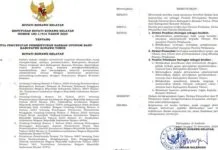Diabetes is a chronic medical condition that occurs when the body is unable to properly regulate blood sugar (glucose) levels. There are two main types of diabetes: type 1 and type 2. Both types can lead to a range of complications if not well-managed. Here are some common complications associated with diabetes:
- Cardiovascular Complications:
- Heart Disease: People with diabetes have an increased risk of developing cardiovascular diseases, including coronary artery disease and heart attacks.
- Stroke: Diabetes is a major risk factor for strokes due to the impact of high blood sugar on blood vessels.
- Nephropathy (Kidney Disease):
- Diabetic Nephropathy: Over time, diabetes can damage the kidneys, leading to kidney disease. This can progress to kidney failure, necessitating dialysis or kidney transplantation.
- Neuropathy (Nerve Damage):
- Peripheral Neuropathy: Diabetes can cause nerve damage, particularly in the extremities, leading to symptoms such as tingling, numbness, pain, and weakness in the affected areas.
- Autonomic Neuropathy: This affects the nerves that control internal organs, potentially causing digestive, urinary, and cardiovascular problems.
- Retinopathy (Eye Complications):
- Diabetic Retinopathy: Diabetes can damage the blood vessels in the retina, leading to vision problems and, if left untreated, blindness.
- Skin Complications:
- Infections: People with diabetes are more susceptible to skin infections and may experience slow wound healing. Serious infections can lead to complications such as cellulitis or abscesses.
- Foot Complications:
- Foot Ulcers: Nerve damage and poor blood circulation in the feet can lead to the development of ulcers, which may become infected and, in severe cases, lead to amputation.
- Hypoglycemia (Low Blood Sugar):
- Overmedication or imbalances in diabetes management can lead to episodes of low blood sugar, which can result in symptoms such as confusion, dizziness, and, in severe cases, loss of consciousness.
- Hyperglycemia (High Blood Sugar):
- Prolonged high blood sugar levels can lead to a variety of acute and chronic complications, including diabetic ketoacidosis (DKA) in type 1 diabetes and hyperosmolar hyperglycemic state (HHS) in type 2 diabetes.
- Increased Risk of Infections:
- Diabetes can weaken the immune system, making individuals more susceptible to infections, including urinary tract infections and skin infections.
- Mental Health Issues:
- Managing diabetes can be emotionally challenging, and individuals may experience stress, anxiety, or depression.
It’s important for individuals with diabetes to work closely with healthcare professionals to manage their condition through medication, lifestyle changes, and regular monitoring to prevent or minimize the risk of complications. Regular medical check-ups, eye exams, and foot care are crucial components of diabetes management and prevention of complications.
Preventing Diabetes
Preventing diabetes involves adopting a healthy lifestyle and making choices that support overall well-being. While type 1 diabetes is not preventable, type 2 diabetes, which is more common, is often linked to lifestyle factors. Here are some key strategies for preventing diabetes:
- Maintain a Healthy Weight:
- Being overweight or obese is a significant risk factor for type 2 diabetes. Achieving and maintaining a healthy weight through a balanced diet and regular physical activity can help reduce this risk.
- Healthy Eating:
- Focus on a well-balanced diet rich in fruits, vegetables, whole grains, lean proteins, and healthy fats. Limit the intake of processed foods, sugary snacks, and beverages.
- Regular Physical Activity:
- Exercise plays a crucial role in diabetes prevention. Aim for at least 150 minutes of moderate-intensity aerobic activity per week, along with muscle-strengthening activities on two or more days per week.
- Manage Blood Pressure:
- High blood pressure is a risk factor for diabetes. Adopting a heart-healthy lifestyle, including a low-sodium diet, regular exercise, and stress management, can help control blood pressure.
- Manage Cholesterol Levels:
- High levels of LDL (“bad”) cholesterol and low levels of HDL (“good”) cholesterol are associated with an increased risk of diabetes. A heart-healthy diet and regular exercise can help manage cholesterol levels.
- Avoid Smoking and Limit Alcohol Consumption:
- Smoking is linked to an increased risk of diabetes and cardiovascular disease. Quitting smoking and limiting alcohol intake can contribute to overall health and reduce diabetes risk.
- Regular Check-ups:
- Regular medical check-ups can help monitor your overall health, including blood sugar levels. Early detection of prediabetes or other risk factors can enable proactive interventions.
- Manage Stress:
- Chronic stress can contribute to unhealthy lifestyle choices and may impact blood sugar levels. Incorporate stress-reducing activities such as meditation, yoga, or hobbies into your routine.
- Quality Sleep:
- Lack of sleep or poor sleep quality has been linked to an increased risk of diabetes. Aim for 7-9 hours of quality sleep per night.
- Screen for Prediabetes:
- If you have risk factors for diabetes, such as a family history or being overweight, consider getting screened for prediabetes. Early detection allows for lifestyle changes that can prevent the progression to diabetes.
- Education and Awareness:
- Stay informed about diabetes and its risk factors. Understanding the importance of a healthy lifestyle and making informed choices can contribute to prevention.
It’s essential to consult with healthcare professionals for personalized advice and guidance based on individual health conditions and risk factors. Lifestyle changes and preventive measures can significantly reduce the risk of developing diabetes and promote overall well-being.
Treating Diabetes
The treatment of diabetes aims to manage blood sugar levels and prevent or manage complications associated with the condition. The approach to treatment can vary depending on the type of diabetes (type 1 or type 2) and individual factors. Here are common components of diabetes treatment:
1. Medication:
Type 1 Diabetes:
Insulin Therapy: Individuals with type 1 diabetes typically require insulin therapy. This may involve multiple daily injections or the use of an insulin pump for continuous insulin delivery.
Type 2 Diabetes:
Oral Medications: These medications help the body use insulin more effectively or assist the pancreas in producing more insulin.
Injectable Medications: Some people with type 2 diabetes may need injectable medications, including GLP-1 receptor agonists or insulin.
2. Insulin Management:
Type 1 Diabetes: Requires careful monitoring of blood sugar levels and adjusting insulin doses accordingly.
Type 2 Diabetes: Insulin may be introduced as part of the treatment plan, especially if other medications are not effectively controlling blood sugar.
3. Blood Sugar Monitoring:
Regular monitoring of blood glucose levels is essential. This may involve daily fingerstick testing or the use of continuous glucose monitoring systems.
4. Lifestyle Changes:
Dietary Modifications: Adopting a balanced, low-sugar, and low-carbohydrate diet.
Regular Exercise: Physical activity helps regulate blood sugar levels and improves insulin sensitivity.
Weight Management: Achieving and maintaining a healthy weight is crucial for individuals with diabetes.
5. Education and Self-Management:
Education on how to manage diabetes, including proper medication administration, blood sugar monitoring, and recognizing and managing symptoms of high or low blood sugar.
6. Regular Medical Check-ups:
Routine check-ups with healthcare professionals to monitor overall health, assess the effectiveness of treatment, and identify any potential complications.
7. Blood Pressure and Cholesterol Management:
Controlling blood pressure and cholesterol levels is crucial in reducing the risk of cardiovascular complications associated with diabetes.
8. Foot Care:
Regular inspection and care of feet to prevent complications such as infections and ulcers.
9. Eye Exams:
Regular eye exams to detect and manage diabetic retinopathy, a complication affecting the eyes.
10. Management of Other Health Conditions:
Addressing and managing other health conditions, such as kidney disease or cardiovascular issues, which can be associated with diabetes.
11. Behavioral and Mental Health Support:
Addressing the emotional and psychological aspects of living with diabetes through counseling or support groups.
12. Continuous Monitoring and Adjustments:
Diabetes management is dynamic, and treatment plans may need adjustments based on changes in lifestyle, health, or the progression of the condition.
Individuals with diabetes should work closely with a healthcare team, including endocrinologists, dietitians, and diabetes educators, to develop a comprehensive and personalized treatment plan. Regular communication and collaboration between the patient and healthcare providers are key to successful diabetes management.
Diagnosing Diabetes
The diagnosis of diabetes involves assessing blood sugar levels and, in some cases, additional tests to determine the type of diabetes and its severity. The diagnostic criteria may vary slightly between organizations, but the following are common methods used to diagnose diabetes:
1. Fasting Plasma Glucose (FPG) Test:
Procedure: This test measures blood sugar levels after an overnight fast (typically at least 8 hours).
Diagnostic Criteria:
Normal: Fasting blood glucose level below 100 mg/dL.
Prediabetes (impaired fasting glucose): Fasting blood glucose level between 100 and 125 mg/dL.
Diabetes: Fasting blood glucose level of 126 mg/dL or higher on two separate occasions.
2. Oral Glucose Tolerance Test (OGTT):
Procedure: The person fasts overnight, and then a glucose solution is consumed. Blood sugar levels are measured before and 2 hours after consuming the solution.
Diagnostic Criteria:
Normal: 2-hour blood glucose level below 140 mg/dL.
Prediabetes: 2-hour blood glucose level between 140 and 199 mg/dL.
Diabetes: 2-hour blood glucose level of 200 mg/dL or higher.
3. Hemoglobin A1c Test:
Procedure: This test measures the average blood glucose levels over the past 2-3 months by assessing the percentage of hemoglobin that has glucose attached.
Diagnostic Criteria:
Normal: A1c level below 5.7%.
Prediabetes: A1c level between 5.7% and 6.4%.
Diabetes: A1c level of 6.5% or higher on two separate occasions.
4. Random Plasma Glucose Test:
Procedure: This test measures blood glucose levels at any time, regardless of when the individual last ate.
Diagnostic Criteria:
Diabetes: Blood glucose level of 200 mg/dL or higher, along with symptoms of diabetes such as increased thirst or urination.
5. Glycated Albumin Test:
Procedure: This test measures the percentage of glycated albumin in the blood, providing information about blood sugar control over a shorter time frame than the A1c test.
6. C-Peptide Test:
Purpose: This test measures the level of C-peptide, a byproduct of insulin production. It helps differentiate between type 1 and type 2 diabetes.
7. Islet Autoantibody Tests:
Purpose: These tests may be conducted to determine if the individual has antibodies that attack the body’s own insulin-producing cells, which is a characteristic of type 1 diabetes.
8. Urine Tests:
Purpose: In some cases, urine tests may be performed to check for the presence of ketones (byproducts of fat metabolism) or to assess kidney function.
9. Clinical Assessment:
Symptoms: The presence of classic symptoms such as increased thirst, frequent urination, unexplained weight loss, and blurred vision may prompt further testing for diabetes.
It’s important to note that a diagnosis of diabetes should be confirmed with repeat testing to rule out transient increases in blood sugar levels. Additionally, healthcare providers may consider the individual’s overall health, medical history, and risk factors in making a diagnosis. Anyone experiencing symptoms of diabetes or having risk factors should consult a healthcare professional for appropriate testing and evaluation. Early diagnosis and management are crucial for effective diabetes care and prevention of complications.




























